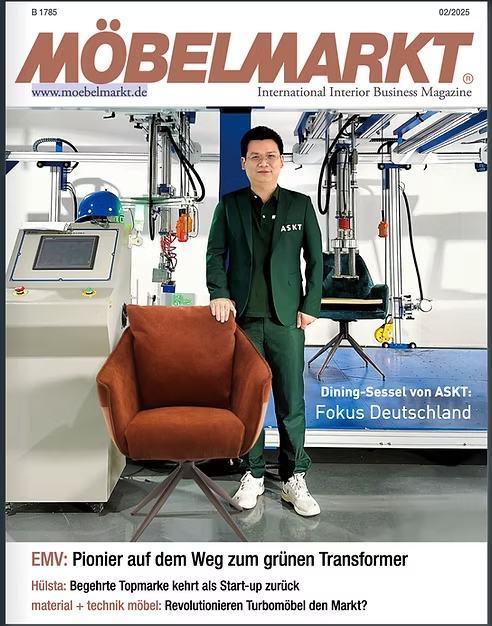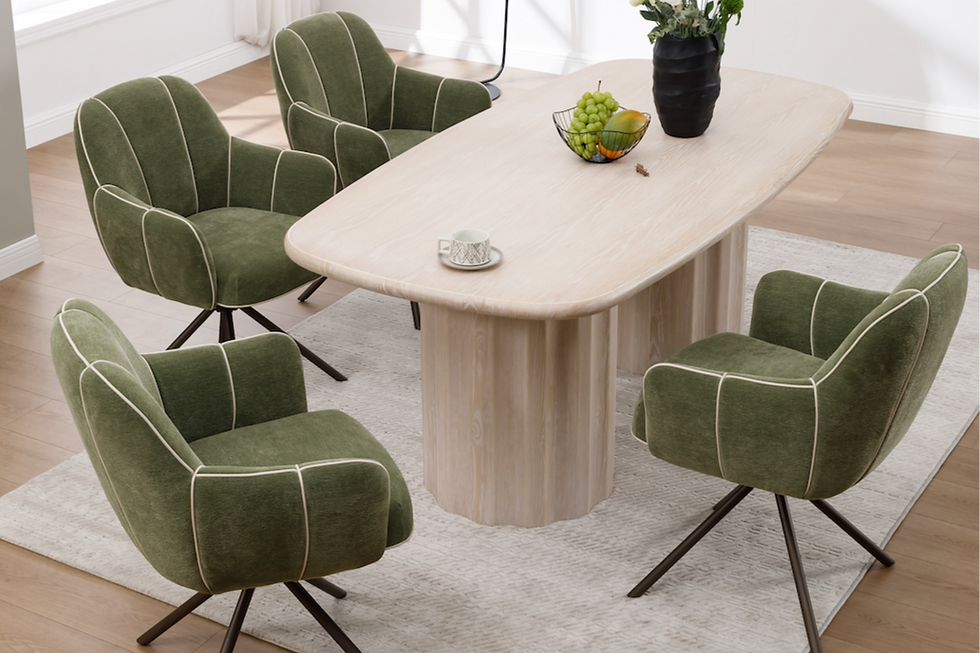The Difference Between Commercial and Residential Furniture: A Guide for Furniture Buyers
- Media ASKT

- Jul 9
- 5 min read
Are you wondering about the difference between commercial and residential furniture? You’re not alone. I’m Sunbin Qi, CEO of ASKT, and over the past 20 years, I’ve helped hundreds of furniture buyers across Europe, especially in Germany, the Netherlands, and the UK, make informed sourcing decisions for retail chains, supermarkets, and hospitality venues. Many of my clients initially thought all chairs were created equal—until they faced complaints about broken joints, unstable structures, and early wear.
If you are sourcing for your furniture retail brand, e-commerce store, or chain restaurants and cafes, understanding the structural and functional differences between commercial and residential furniture is essential to protect your margins and reduce after-sales issues.

What is Commercial Furniture?
Commercial furniture refers to furniture specifically designed and tested for high-traffic, high-use environments such as restaurants, hotels, office lobbies, hospitals, educational institutions, and shopping centers.
1. Key Functional Attributes
Commercial furniture is often labeled as "contract-grade" because it must meet stringent performance requirements.
Durability: Designed for repetitive use by hundreds of users per day. For example, the seats in a restaurant need to withstand constant pulling, stacking, and cleaning.
Structural Reinforcement: At ASKT, we use welding processes refined with robotic arms to ensure structural integrity. Every chair leg is tested using a forward and lateral static load test, so it doesn’t collapse under uneven pressure.
Safety: Compliance with international standards is mandatory. Our products are ISO9001 certified and tested using 12 different types of load-bearing and impact resistance equipment.
2. Common Applications
Hotels: Lobby seating, room furniture, and dining room chairs are exposed to constant use. Contract furniture for hotels is engineered to survive.
Restaurants & Cafes: Stackable, wipe-clean, sturdy seating is essential. Each chair must survive hundreds of uses a day. We conduct seat impact and armrest durability tests.
Malls & Public Spaces: Furniture must resist wear from people sitting for a few minutes or hours. Our honeycomb paper packaging ensures it arrives intact.
Educational Institutions: School desks and chairs face scratching, impacts, and tipping. We engineer high-pressure laminate surfaces and scratch-resistant finishes.
Hospitals: Here, hygiene and stability are key. ASKT chairs for clinics feature stain-resistant, antibacterial fabrics and wipeable metal frames.
3. Materials & Engineering
Hardwoods like Beech, Oak, Maple: Moisture content <8% to prevent warping.
Metal Frames: Often powder-coated and robotically welded.
Coatings: Polyurethane coatings for scratch-resistance.
Fabric Specs: OEKO-TEX® STANDARD 100 certified, waterproof, breathable, and stain-resistant. We even have pet-friendly options.
4. Design & Accessibility
Commercial furniture must accommodate diverse users. At ASKT, our chairs are ergonomically tested to support individuals of varying heights, weights, and physical conditions.
5. Regulatory Compliance
Fire-retardant materials (especially in the UK market)
Load-bearing and anti-tip standards
Accessibility (e.g., ADA in the US; EN 16139 in Europe)

What is Residential Furniture?
Residential furniture is designed for home use. It is meant to be stylish, lightweight, and affordable—ideal for low-traffic settings where it is used by the same individuals daily.
1. Key Functional Attributes
Aesthetic Priority: Designed for visual appeal and style trends. For example, we use decorative veneer, plush upholstery, and softer curves.
Light Duty: Not engineered for rigorous use. Most chairs are made of softwood like pine and are suitable for private homes where usage is moderate.
Mobility: Lightweight so homeowners can move pieces easily.
2. Common Applications
Living Rooms: Style is king here. Residential furniture is often chosen to match interior color schemes.
Bedrooms & Guest Rooms: Usually underused and prioritized for visual appeal.
Patios: Depending on the climate, materials like aluminum or resin are used for weather resistance.
3. Materials & Construction
Softwoods (Pine, Rubberwood): Cheaper and easier to shape but less durable.
Fabric: Trendy but not necessarily durable or stain-resistant. We recommend OEKO-TEX fabrics even in homes for added safety.
Joinery: Screws and glue are often used instead of welded joints.
4. Design
Residential design is trend-driven. Whether your customer likes Scandinavian minimalism or British cottage core, residential furniture follows seasonal preferences.
5. Compliance
No strict requirement unless used in public areas or for institutional purposes. However, we always recommend offering furniture with tested fabric to reassure buyers.
Comparing the Two: Commercial vs. Residential
Attribute | Commercial Furniture | Residential Furniture |
Wood Type | Beech, Oak, Maple (6-8% moisture) | Pine, Rubberwood (up to 12%) |
Durability | 3-5 years+ | 6-12 months under heavy use |
Warranty | Extensive | Limited or none |
Fabric | Waterproof, stain-resistant, breathable, OEKO-TEX® | Trendy, not always tested |
Design Goal | Performance & accessibility | Style & individuality |
Cost | Higher due to compliance and material quality | Lower, more price-sensitive |
Compliance | Fire, safety, load standards (EN 16139, BIFMA) | Minimal |

Why This Matters to Group Buyers
When you’re a product manager sourcing furniture for a hotel chain, e-commerce platform, or restaurant franchise, you simply cannot afford callbacks, complaints, or breakages. I've seen buyers lose entire contracts due to product failures.
At ASKT, we serve customers like you. That’s why we:
Provide video-documented quality checks using 11 inspectors.
Support compliance with EU plastic tax policy through zero-plastic packaging.
Improve shipping efficiency by 30% with honeycomb paper packaging.
Reduce environmental compliance costs by 15%.
And unlike many suppliers, we are not just a trading company. We operate four R&D centers across China, with a 1,200 sqm facility dedicated to prototyping, testing, and showroom presentation. Our team of over 20 quality engineers and craftsmen ensures your product meets European expectations.
Final Thoughts: How to Choose
If you are a furniture buyer for large-scale usage scenarios:
Always go for commercial-grade. It reduces returns, ensures user safety, and enhances your brand image.
Inspect certification and test protocols. Ask your supplier for real videos or testing documentation.
Prioritize packaging innovation. If you’re shipping to Germany or the Netherlands, plastic tax compliance is crucial.
If you're catering to B2C consumers:
Residential furniture may suffice, but you should still ask about basic tests and fabric quality.
Trendy, colorful furniture sells, but ensure it doesn't become a liability.
About Me
I'm Sunbin Qi, CEO of ASKT, and the first Asian CEO featured on the cover of möbelmarkt, the leading furniture industry magazine in Germany. I lead a team that has helped over 200 European importers build profitable, complaint-free furniture lines. I personally study the structural integrity of frames, test the scratch-resistance of fabrics, and oversee every new product prototype.
Whether you need custom dining chairs for a supermarket chain or restaurant line, we help you bring safety, style, and sustainability together.

Let’s build better furniture for your brand.
Visit us: www.asktfurniture.net
Email: sales@sinoaskt.com WhatsApp: +86 18912605997 Follow us on: LinkedIn, Instagram, YouTube, Pinterest, Threads






Comments